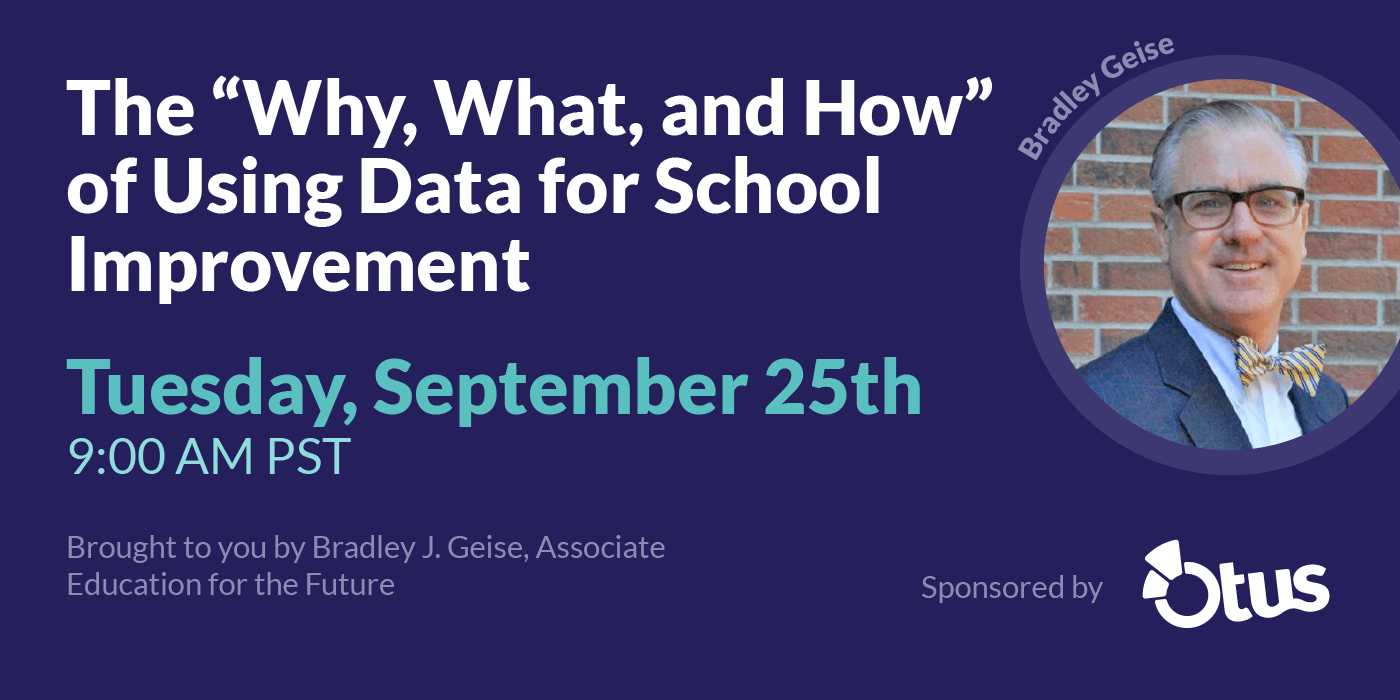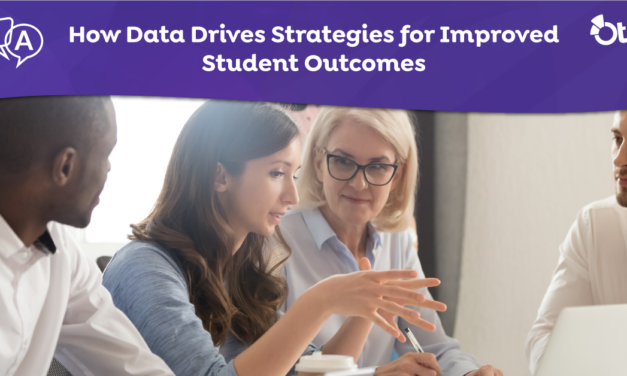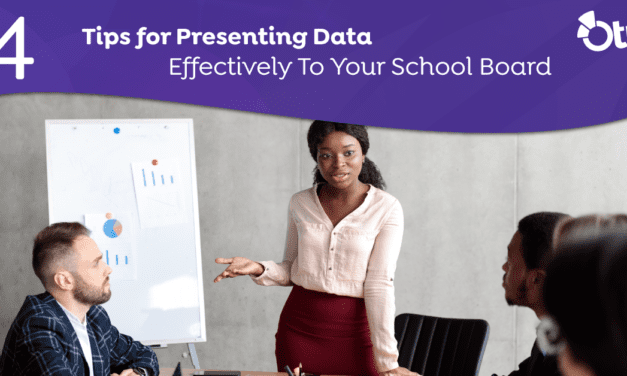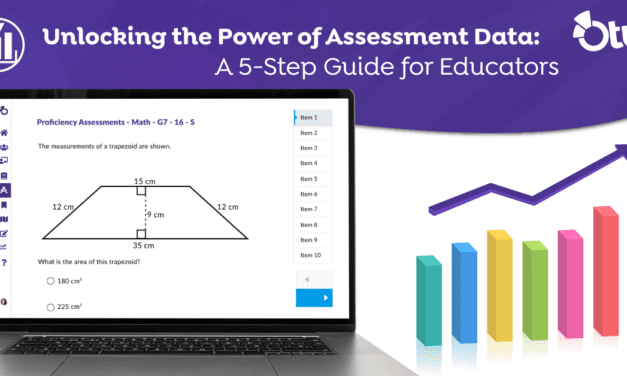As in any industry, data can be a powerful tool in education. It provides key insights into how to teachers and administrators can improve student learning. However, it is only helpful if school employees know how to properly utilize it.
In order to help educators make sense of their data, we’re sponsoring a webinar later this month. The webinar titled “The ‘Why, What, and How’ of Using Data for School Improvement”, will feature Bradley J. Geise, an associate at Education for the Future. Bradley has decades of experience helping schools and districts properly utilize data.
We caught up with Bradley prior to the webinar to get a better sense of his background and his insight into education data.
Tell us a bit about your background and experience in education.
I have 25 years of experience facilitating the use of data for Continuous School Improvement with Education for the Future, a 501(c)(3) non-profit initiative at California State University, Chico. Our mission is to build the capacity of learning organizations to use data to improve teaching and learning. Our work has been chronicled in 22 books over 25 years. We believe data analysis, with a strong shared vision, is necessary for true improvement to take place. We focus on comprehensive data analysis for Continuous School Improvement, staff engagement and facilitation, systemic improvement, strategies for effective leaders, and long-term capacity building.
How do you recommend districts engage staff with data to realize a shared vision for improvement?
It is essential that learning organizations utilize a formal framework for Continuous School Improvement that links data and staff engagement with shared vision, planning, and evaluation. Shared vision is the prescription for improvement relative to curriculum, instruction, assessment, and environment. It is the target for what you are evaluating yourselves against. The alternative is just to focus improvement efforts on data for compliance for accountability. This creates a singular focus on student achievement data, and the often unintended result is that anything not traditionally tested is marginalized.
Based on our previous conversations, we agree it’s crucial to organize and present data in a way that links analysis to actionable next steps. How are districts successfully transforming data into action?
The mantra of Continuous Improvement is “all work is a process.” Schools are perfectly designed to realize their current results. If schools want different results, they need to measure and then change their processes to get the results they want. The core has to be about using multiple measures of data: demographic, perceptions (questionnaire work), student learning, and school programs/processes. In this sense, all work with data has to be focused on the identification, ownership, internalization, improvement, and evaluation of programs and processes to realize the desired results. This is what we do…
Technology affords educators the ability to use data to inform decisions like never before. What is one example of best practice relative to data use that is especially relevant today?
We are seeing data used for gap analysis as the sole solution for school improvement. Folks rush to fill the gaps, and in the process anything that isn’t tested is marginalized. The alternative best practice is to use comprehensive data analysis with a focus on informing and evaluating ourselves against the shared vision of those within the learning organization. This allows you to consider the full scope of what you value and believe needs to be in place relative to curriculum, instruction, assessment, and environment relative to areas of identified need.
Collecting student data is about much more than compliance. If a district we’re starting today on the path towards school improvement, where do you recommend they begin?
All in all, it is actually pretty simple. Look for opportunities to align the framework for Continuous School Improvement to what you already do. What are we doing well relative to the framework? What could we be doing better? How can we leverage one for the other?
If you’re interested in learning more about using data in your school, we’d love to see you in our webinar on September 25th. If you have any questions in the meantime, feel free to reach out to me on Twitter at @NoApp4Pedagogy.





